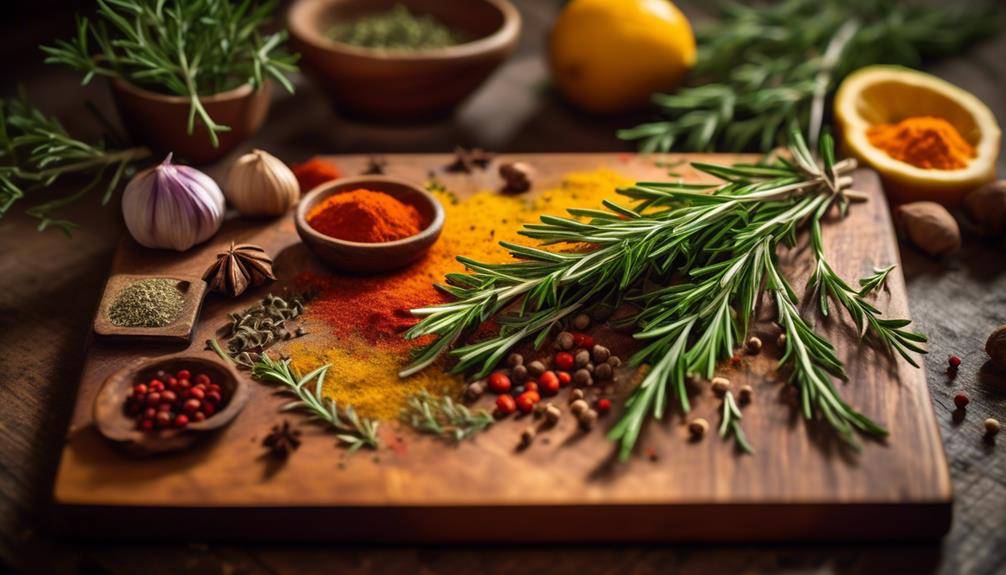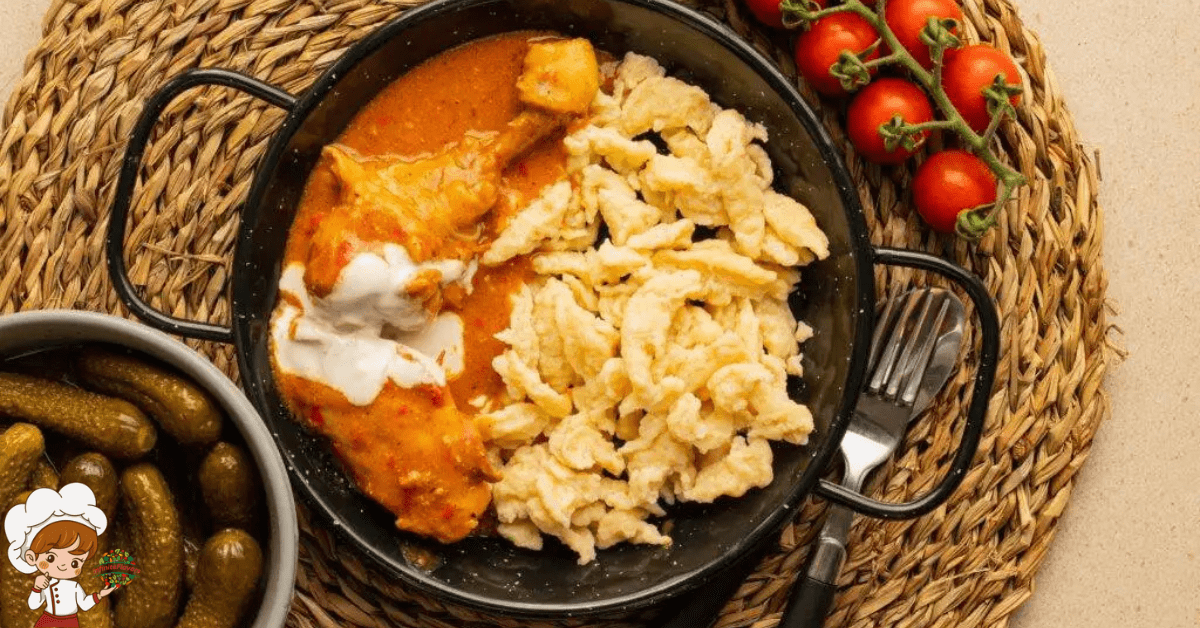Easy Korean Recipes For Beginners

Easy Korean Recipes For Beginners; Looking to spice up your culinary repertoire? Look no further than these easy Korean recipes for beginners. Whether you’re a novice in the kitchen or simply looking for new flavors to explore, these dishes will transport you to the vibrant streets of Seoul. From the crispy goodness of Classic Korean Fried Chicken to the comforting warmth of Spicy Tofu Soup, there’s something for everyone. So grab your apron and get ready to embark on a culinary adventure that will tantalize your taste buds and leave you craving for more.
Classic Korean Fried Chicken
If you’re a beginner looking to delve into the world of Korean cuisine, one dish that should definitely be on your radar is the classic Korean Fried Chicken. This beloved dish is known for its crispy and flavorful exterior, tender and juicy meat, and a variety of delicious sauces. When it comes to coating techniques, there are two popular methods used in Korean Fried Chicken: the double-fry method and the single-fry method.
The double-fry method involves frying the chicken twice. The first fry helps to render the fat and cook the chicken through, while the second fry gives it that signature crispy texture. This method ensures that the chicken is cooked thoroughly and prevents it from becoming greasy. On the other hand, the single-fry method involves frying the chicken once. This method is simpler and requires less time and effort but may result in a slightly less crispy texture.
In addition to the coating techniques, another highlight of Korean Fried Chicken is the variety of sauces that can be used to enhance its flavor. Some popular options include the classic soy garlic sauce, which combines soy sauce, garlic, and a touch of sweetness, creating a savory and slightly sweet flavor profile. There’s also the spicy gochujang sauce, made with gochujang paste, which adds a fiery kick to the chicken. Other sauces like honey butter, tangy mustard, and sweet and sour are also commonly enjoyed with Korean Fried Chicken.
With its crispy coating techniques and flavorful sauces, Korean Fried Chicken is a must-try dish for anyone venturing into Korean cuisine. Whether you prefer the double-fry method for extra crunch or the simplicity of the single-fry method, there’s no denying the deliciousness of this classic dish. So go ahead, grab some chicken, get frying, and enjoy the mouthwatering flavors of Korean Fried Chicken.
Spicy Tofu Soup (Sundubu-jjigae)
To make Spicy Tofu Soup (Sundubu-jjigae), you will need a few key ingredients. These include soft tofu, ground pork or beef, kimchi, gochujang (Korean red pepper paste), and various vegetables like mushrooms and onions. The soup is typically cooked in a large pot, starting with sautéing the meat and vegetables before adding the tofu and broth. The final result is a flavorful and spicy soup that is perfect for warming up on a cold day.
Ingredients Needed
When making Spicy Tofu Soup (Sundubu-jjigae), gather the following authentic Korean ingredients to ensure a flavorful and satisfying dish. To start, you will need soft tofu, preferably silken tofu, which adds a creamy texture to the soup. Other essential ingredients include gochugaru (Korean red pepper flakes), gochujang (fermented red chili paste), and soy sauce, which provide the soup with its signature spicy and savory flavors.
Additionally, you will need garlic, onion, and green onions for a fragrant base, as well as seafood such as clams or shrimp to enhance the taste. For the finishing touch, use sesame oil to add a nutty aroma. If you are unable to find some of these ingredients, you can opt for alternatives such as regular tofu or vegetable broth for a vegetarian version. Remember to adjust the spice level according to your preference. Happy cooking!
Cooking Instructions
For a delicious and authentic Spicy Tofu Soup (Sundubu-jjigae), follow these detailed cooking instructions. To begin, gather the essential kitchen tools: a medium-sized pot, a wooden spoon, and a sharp knife. Start by heating the pot over medium heat and adding a tablespoon of vegetable oil. Once heated, add the minced garlic and chopped onion, sautéing until fragrant. Next, add the kimchi and gochujang, stirring well to combine the flavors. Pour in the vegetable broth and bring it to a boil.
Now, carefully add the soft tofu and gently break it into smaller pieces with the wooden spoon. Allow the soup to simmer for about 5 minutes to let the flavors meld together. Finally, season the soup with salt and pepper, and garnish with chopped green onions. Serve hot and enjoy this comforting Korean dish.
Easy Kimchi Pancakes (Kimchijeon)
Now, let’s talk about the key points you need to know when making Easy Kimchi Pancakes (Kimchijeon). First, you’ll need a few basic ingredients like kimchi, flour, water, and some optional additions like green onions or shrimp. The cooking process involves mixing the ingredients together to create a batter, frying the pancakes until crispy and golden brown, and serving them hot with a tangy dipping sauce. These pancakes make a delicious appetizer or snack, and they’re a great way to introduce yourself to the flavors of Korean cuisine.
Ingredients Needed
To make Easy Kimchi Pancakes (Kimchijeon), you will need a variety of fresh ingredients that bring together the flavors of kimchi and pancake batter. These pancakes are a perfect choice for a quick and delicious meal, especially if you’re looking for vegetarian options or easy one-pot recipes.
The main ingredient you will need is kimchi, a traditional Korean side dish made from fermented vegetables. Make sure to use good-quality kimchi to enhance the flavors of your pancakes. You will also need all-purpose flour, which will give your pancakes a light and crispy texture.
Other ingredients include water, eggs, salt, and vegetable oil for frying. These ingredients are easy to find and readily available in most supermarkets.
Cooking Process
To successfully cook Easy Kimchi Pancakes (Kimchijeon), it’s important to master the art of combining the tangy flavors of kimchi with the light and crispy texture of the pancake batter. Here are some cooking techniques and common Korean ingredients to help you create delicious kimchi pancakes:
- Preparing the batter:
- In a mixing bowl, combine all-purpose flour, water, and a beaten egg.
- Add a pinch of salt and a teaspoon of soy sauce for extra flavor.
- Mix the ingredients until a smooth batter forms.
- Incorporating the kimchi:
- Chop the kimchi into small pieces and squeeze out excess liquid.
- Add the kimchi to the batter and mix well, ensuring every piece is coated.
- Cooking the pancakes:
- Heat a non-stick pan with some vegetable oil over medium heat.
- Spoon the batter onto the pan, forming small pancakes.
- Cook for a few minutes on each side until golden brown.
- Serving:
- Serve the kimchi pancakes hot with a dipping sauce made of soy sauce, vinegar, and sesame oil.
Serving Suggestions
For a delightful twist, consider serving your Easy Kimchi Pancakes (Kimchijeon) with a refreshing side of tangy pickled radishes. This traditional Korean side dish, known as “Musaengchae,” perfectly complements the savory and slightly spicy flavors of the kimchi pancakes. To make the pickled radishes, thinly slice some daikon radishes and marinate them in a mixture of vinegar, sugar, and salt.
Let them sit for at least 30 minutes to allow the flavors to meld together. When it comes to serving your kimchi pancakes, you can get creative with the plating. Arrange them on a plate and garnish with sesame seeds and sliced green onions for added visual appeal. The crispy texture of the pancakes paired with the tangy pickled radishes will surely elevate your dining experience.
Quick and Simple Bulgogi
If you’re craving a delicious and flavorful Korean dish that can be prepared in no time, try making Quick and Simple Bulgogi. This popular Korean dish is made with thinly sliced beef that is marinated in a sweet and savory sauce, then quickly stir-fried for a tender and juicy result. Here are some key points to help you make this dish:
- Cooking Variations: Bulgogi can be made with different types of meat, such as chicken or pork, instead of beef. You can also add vegetables like mushrooms, onions, or bell peppers to enhance the flavor and texture.
- Marinade Alternatives: The traditional bulgogi marinade consists of soy sauce, sugar, garlic, sesame oil, and ginger. However, you can experiment with different ingredients to create your own unique flavor. For example, you can add pear or apple puree for a slightly fruity taste or gochujang (Korean red pepper paste) for a spicy kick.
- Slicing the Meat: To achieve the best texture, it is important to slice the meat thinly against the grain. This will make the meat tender and easy to chew. If you’re having difficulty slicing the meat yourself, you can ask your butcher to do it for you.
- Quick Cooking Time: The beauty of bulgogi is that it cooks quickly. Once the meat is marinated, it only takes a few minutes to stir-fry it until it’s cooked through. Be careful not to overcook the meat as it can become tough.
With these tips in mind, you’re ready to make your own Quick and Simple Bulgogi. Enjoy the delicious flavors and impress your family and friends with your Korean cooking skills!
Savory Korean BBQ Ribs (Galbi)
Indulge in the savory flavors of Korean BBQ with these mouthwatering Galbi ribs. Galbi, also known as Korean BBQ short ribs, is a popular dish that is loved for its tender meat and delicious marinade. To make the perfect Galbi, it’s important to follow some cooking tips to ensure that the meat is flavorful and cooked to perfection.
Firstly, when marinating the ribs, it’s best to let them sit in the marinade for at least 2 hours or overnight. This allows the flavors to penetrate the meat and tenderize it. The traditional Galbi marinade consists of soy sauce, sugar, garlic, ginger, sesame oil, and pear juice. However, if you’re looking for alternative marinades, you can try using a combination of soy sauce, honey, garlic, onion, and sesame oil for a slightly sweeter flavor.
When it comes to cooking the Galbi ribs, grilling is the preferred method. Preheat your grill to medium-high heat and cook the ribs for about 3-4 minutes on each side, or until they are nicely charred and cooked through. If you don’t have a grill, you can also broil the ribs in the oven for about 10-12 minutes per side.
Once your Galbi ribs are cooked, serve them with a side of steamed rice, kimchi, and lettuce wraps. The combination of the tender, flavorful meat with the crisp lettuce and tangy kimchi creates a perfect balance of flavors. So go ahead and try making these savory Korean BBQ ribs (Galbi) at home and impress your family and friends with your culinary skills!
Delicious Seafood Pancake (Haemul Pajeon)
After satisfying your cravings with the savory flavors of Korean BBQ ribs, it’s time to explore another delectable dish – the delicious Seafood Pancake (Haemul Pajeon). This Korean pancake is packed with fresh seafood and a crispy texture that will leave you wanting more. Here are some variations and tips for making crispy pancakes that you can try at home:
- Seafood Pancake Variations:
- Classic Haemul Pajeon: This version includes a mix of shrimp, squid, and green onions, creating a harmonious blend of flavors.
- Kimchi Seafood Pancake: By adding kimchi to the batter, you can enjoy a tangy and spicy twist to your pancake.
- Vegetable Seafood Pancake: If you prefer a lighter option, you can add a variety of thinly sliced vegetables like zucchini, carrots, and mushrooms to the batter.
- Use Ice Cold Water: To achieve a crispy texture, it is crucial to use ice cold water when making the pancake batter. The cold water helps create air pockets in the batter, resulting in a lighter and crispier pancake.
- Preheat the Pan: Before pouring the batter, make sure to preheat the pan with a generous amount of oil. The hot pan will help create a crispy and golden crust.
- Cook on Medium to High Heat: Cooking the pancake on medium to high heat ensures that the pancake cooks quickly and evenly. This prevents the pancake from becoming soggy and helps maintain its crispy texture.
Tangy and Sweet Bibimbap
To experience the tangy and sweet flavors of Bibimbap, you’ll need to gather a variety of fresh vegetables, a perfectly cooked sunny-side-up egg, and a flavorful sauce. Bibimbap, which means “mixed rice” in Korean, is a popular dish that combines rice with an assortment of vegetables, meat, and a spicy sauce. It is not only delicious but also offers various health benefits.
There are several cooking variations of Bibimbap, but the most common one involves sautéing the vegetables separately and arranging them on top of steamed rice. The vegetables typically include spinach, carrots, bean sprouts, mushrooms, and zucchini. Each vegetable is cooked to perfection, maintaining its natural crispness and flavor. The dish is then topped with a sunny-side-up egg, which adds richness and creaminess to the overall taste.
The sauce used in Bibimbap is a crucial element that enhances its tangy and sweet flavors. It is usually made with gochujang, a Korean chili paste, soy sauce, sesame oil, garlic, and sugar. The combination of these ingredients creates a balance between spiciness and sweetness, adding depth to the dish.
In addition to its delicious taste, Bibimbap is also a nutritious meal. The variety of fresh vegetables used in the dish provides a range of vitamins, minerals, and antioxidants. The combination of protein from the egg and carbohydrates from the rice makes it a well-rounded meal that keeps you energized throughout the day.
Easy Stir-Fried Glass Noodles (Japchae)
Now that you’ve experienced the tangy and sweet flavors of Bibimbap, it’s time to explore another delicious Korean dish: Easy Stir-Fried Glass Noodles, also known as Japchae. Japchae is a popular Korean dish made with sweet potato glass noodles, various vegetables, and a savory sauce. It’s a versatile dish that can be served as a main course or as a side dish, perfect for any occasion. Here are some cooking variations and vegetarian alternatives to consider when making Japchae:
- Cooking Variations:
- Protein: You can add your choice of protein to Japchae, such as beef, chicken, or shrimp. Simply stir-fry the protein separately and mix it with the noodles and vegetables.
- Spiciness: If you prefer a spicy kick, you can add gochujang (Korean red pepper paste) or red pepper flakes to the sauce. Adjust the amount according to your taste.
- Garnish: To enhance the flavors, you can garnish Japchae with sesame seeds or thinly sliced green onions. This adds a nice crunch and visual appeal to the dish.
- Sauce: The sauce is a crucial component of Japchae. You can customize the sauce by adding soy sauce, sesame oil, garlic, and sugar to achieve the perfect balance of flavors.
- Vegetarian Alternatives:
- Tofu: Substitute the protein with tofu for a vegetarian-friendly version. Stir-fry the tofu until golden brown and mix it with the noodles and vegetables.
- Mushrooms: Another great vegetarian alternative is to use mushrooms, such as shiitake or oyster mushrooms. They add a meaty texture and earthy flavor to the dish.
- Soy Sauce Alternative: For a vegetarian-friendly sauce, you can substitute soy sauce with tamari or liquid aminos, which are gluten-free soy sauce alternatives.
Japchae is a delicious and versatile dish that can be customized to suit your taste preferences. Whether you choose to add protein or opt for vegetarian alternatives, Japchae is sure to satisfy your cravings for a flavorful Korean meal.
Flavorful Korean Beef Stew (Galbitang)
For an authentic and flavorful Korean meal, look no further than the rich and comforting Galbitang, a beef stew that will warm your soul. Galbitang is a classic Korean dish made with beef short ribs, vegetables, and aromatic seasonings. This hearty stew is not only delicious but also easy to make, perfect for beginners in Korean cooking.
To start, you will need a good quality beef short ribs. The bones in the ribs add depth and richness to the broth. It’s important to simmer the meat for a long time to ensure the beef becomes tender and the flavors develop. You can use a pressure cooker or a regular pot for this recipe. If you’re short on time, a pressure cooker will significantly reduce the cooking time.
The key to a flavorful Galbitang is the seasoning. Traditional ingredients include soy sauce, garlic, ginger, and black pepper. These flavors complement the beef and give the stew its distinct taste. However, feel free to experiment with different seasonings to suit your taste. Some variations include adding Korean red chili flakes for a spicy kick or substituting soy sauce with fish sauce for a different flavor profile.
When it comes to vegetables, Galbitang typically includes onions, carrots, and mushrooms. However, you can add other vegetables like potatoes, zucchini, or radish to make the stew heartier. Don’t be afraid to get creative with your vegetable choices.
Galbitang is often served with a side of rice, kimchi, and other banchan (Korean side dishes) for a complete meal. It’s a comforting and nutritious dish that you can enjoy any time of the year. So, grab your ingredients and get ready to make a delicious bowl of Galbitang that will transport you straight to Korea.
Frequently Asked Questions: Easy Korean Recipes For Beginners
Can I Use Boneless Chicken for Classic Korean Fried Chicken?
Yes, you can use boneless chicken for classic Korean fried chicken. It’s a great alternative to bone-in chicken and can still result in a delicious, crispy dish.
What Are Some Common Side Dishes That Can Be Served With Spicy Tofu Soup?
Common Korean side dishes that pair well with spicy tofu soup include kimchi, pickled radish, and seasoned seaweed. These add a variety of flavors and textures to complement the spiciness of the soup.
Can I Substitute Regular Flour for Rice Flour in Easy Kimchi Pancakes?
Yes, you can substitute regular flour for rice flour in easy kimchi pancakes. However, keep in mind that the texture and taste may differ slightly. Rice flour will give a lighter, crispier result.
What Is the Best Cut of Beef to Use for Quick and Simple Bulgogi?
For quick and simple bulgogi, the best cut of beef to use is ribeye. It’s tender and has a rich flavor. Marinating the beef in a soy sauce-based marinade and grilling it is the traditional and most delicious way to prepare bulgogi.
Can I Use Frozen Seafood for Delicious Seafood Pancake?
Yes, you can use frozen seafood for a delicious seafood pancake. Just make sure to thaw it properly before using. If you prefer a vegetarian version, you can substitute the seafood with vegetables like mushrooms or zucchini.
Conclusion
In conclusion, these easy Korean recipes are perfect for beginners looking to explore the flavors of Korean cuisine. From the crispy and addictive Classic Korean Fried Chicken to the comforting Spicy Tofu Soup and the savory Bulgogi, there are options for everyone’s taste. Whether you’re in the mood for a quick and simple meal or a more elaborate dish like Galbi or Bibimbap, these recipes are sure to impress and satisfy your cravings. So why not give them a try and embark on a delicious culinary journey?








